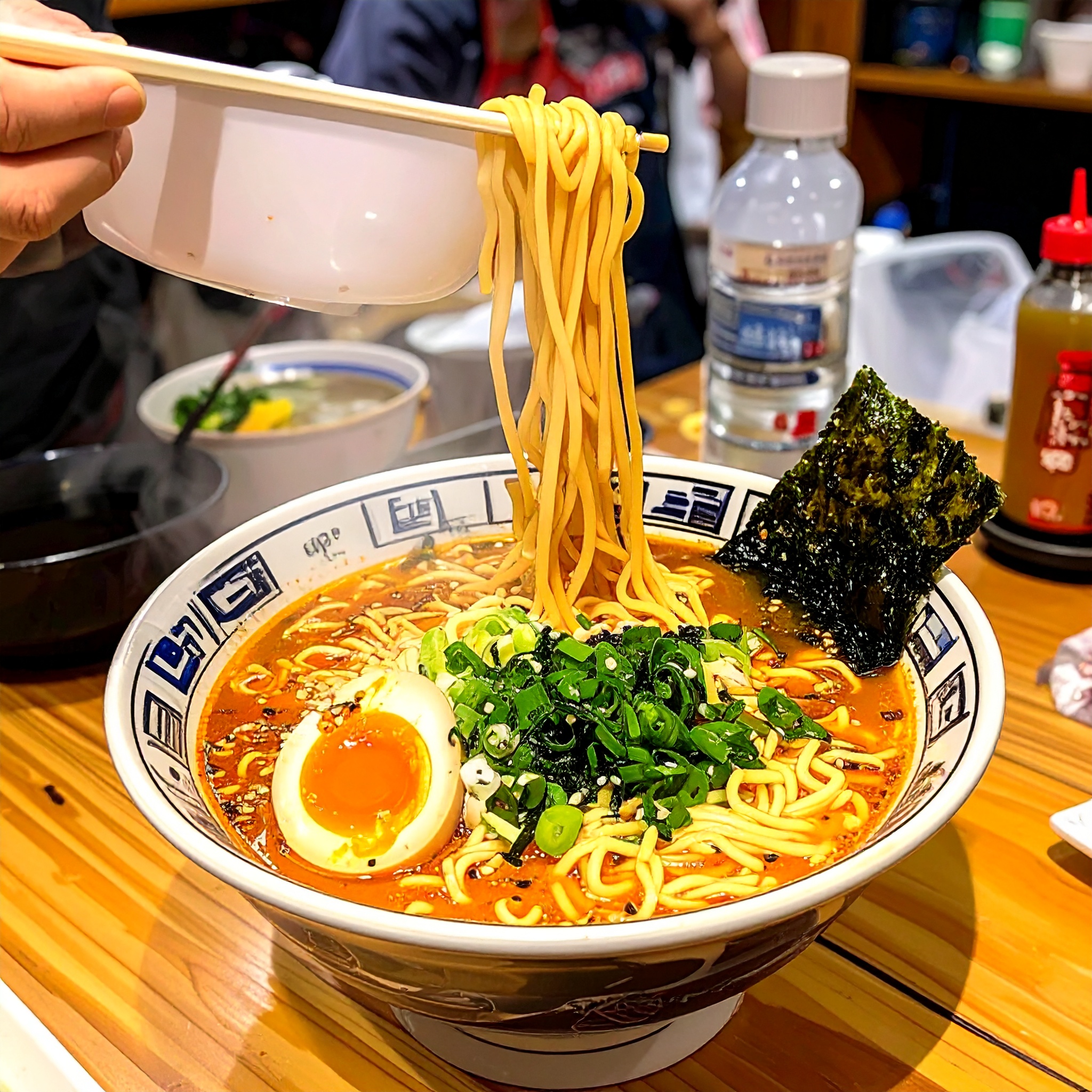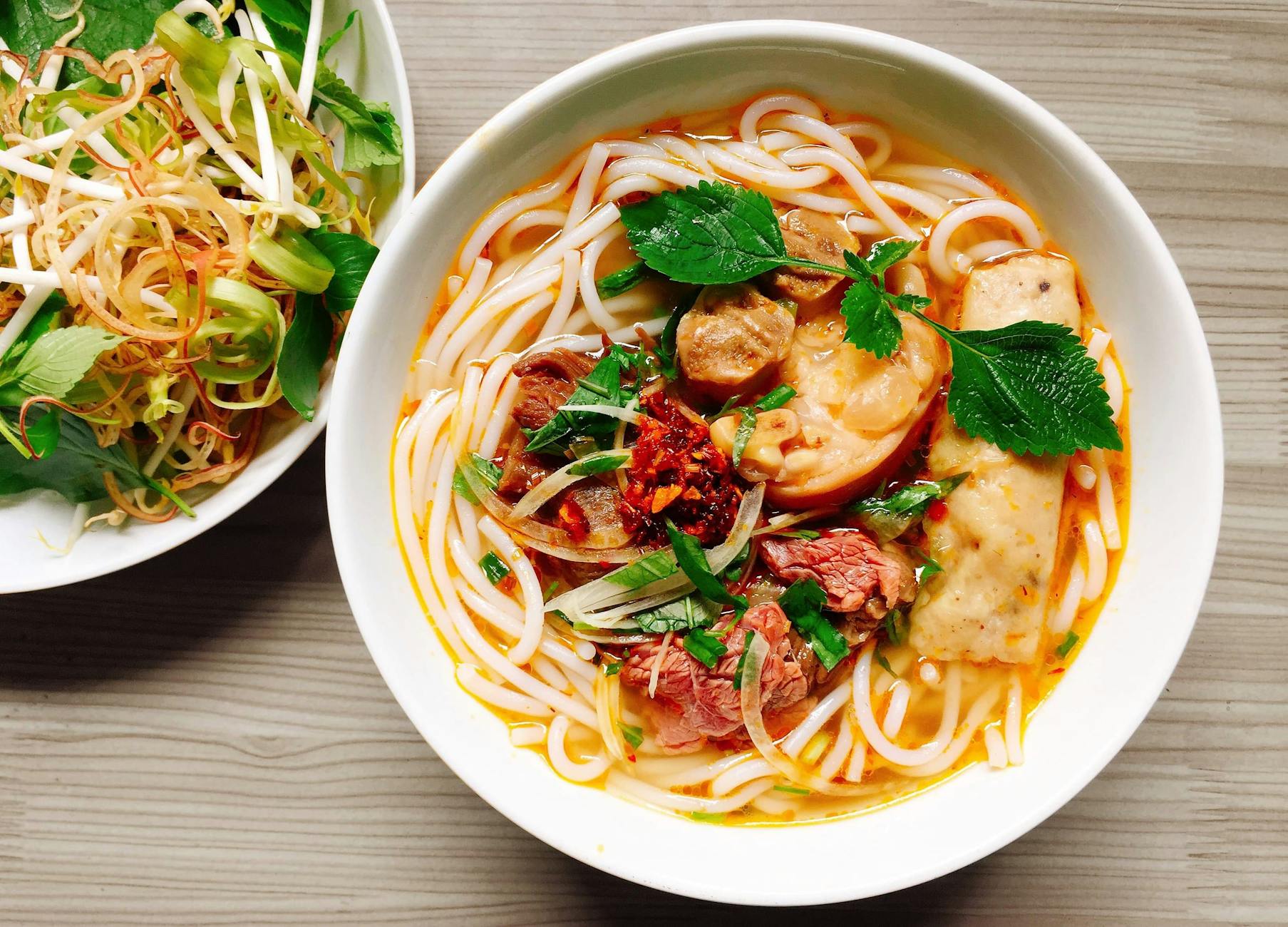Beneath the rising steam of a single bowl lies a world of meticulous technique and instantaneous judgment. Every movement, every second, is carefully orchestrated in the mind of the ramen artisan. Though often perceived as a humble, everyday meal, ramen in Japan is in fact a form of culinary artistry—refined to a degree where seconds define excellence.
The process may appear simple: boil the noodles, pour the broth, arrange the toppings. But behind this sequence lies a silent tension—where even the smallest shift in timing can alter the entire composition. No element is immune to scrutiny.
Take the boiling of noodles, for instance—the heart of the craft. Orders may specify firmness—hard, medium, or soft—but true precision goes far deeper. Noodle thickness, hydration levels, air temperature, humidity, and even the mineral content of the water subtly influence texture and elasticity. Seasoned ramen chefs rely not on timers, but on instinct—reading the noodles by their movement, color, and resistance, sensing the precise moment when they reach their optimal state.
Equally crucial is the draining of the noodles—a seemingly fleeting action that defines the entire balance of the dish. Too much water, and the broth is diluted; too little, and the noodles lose cohesion. In that brief moment, the chef engages all senses—judging weight, steam, and the tactile rhythm of the wrist. Here, gravity, moisture, and motion align—refined in seconds, resolved in taste.

Temperature control in ramen preparation is far more than a matter of boiling or simmering. In many esteemed kitchens, the broth within the stockpot subtly evolves in flavor throughout the day. Left unmanaged, this natural progression can create slight shifts in intensity depending on the time a bowl is served. To maintain consistency, chefs are constantly adjusting heat, stirring intervals, and the precise moments for adding elements like otsukatsuo (extra bonito) or aromatic fats—an ongoing calculation refined through experience.
Ramen is also defined by its choreography of simultaneity. While noodles are boiling, bowls are warmed, tare and broth are combined, and toppings such as roast pork or vegetables are assembled. Each step must align with exact timing—any delay, even of a few seconds, can cool the broth, overcook the noodles, or disrupt the harmony of the bowl. Precision, here, is not an ideal—it is a necessity.
What is most fascinating is that this meticulous time management is not executed by machines, but through human intuition. Even in an era of high-precision timers and kitchen sensors, many ramen artisans make their final judgments using the five senses: the sound of boiling water, the weight of the ladle, the aroma of rising steam, the texture under the fingers, the visual clarity of the broth. It is a tactile intelligence—evidence that ramen, for all its refinement, remains a human craft, not an industrial product.
What sustains this “flavor measured in seconds” is a vast reserve of repetition and internalized memory. By performing the same motions at the same time, with the same measurements, day after day, the craftsman’s body begins to remember the exact second of perfection. What appears to be instinct is, in truth, the quiet culmination of thousands of micro-decisions—an intuitive logic honed through countless hours of dedicated practice.
It is this depth of technique that has earned ramen global admiration. Around the world, Japanese ramen has transcended its casual origins to become a cuisine of precision and discipline. Especially in international contexts, the allure increasingly lies not in visual flair but in the trust placed in technique—flavor defined by mastery rather than embellishment. As a result, more and more chefs abroad are returning to Japan to study these nuances firsthand—refining their own understanding of timing, temperature, and even the delicate choreography of draining noodles.

Ramen was once prized for its speed—quick to serve, easy to eat, a convenient comfort in the midst of modern life. But the accumulated skills of Japanese ramen artisans now remind us that what appears fast is, in fact, an art of tension and decision compressed into every single second.
To perfect a single bowl requires dozens of actions and hundreds of judgments, each calibrated with quiet intensity. And in the moment we receive that bowl across the counter, we unknowingly partake in a delicate aesthetic built from seconds—an experience of timing, precision, and care.
The lingering satisfaction after the final sip is not merely the result of flavor—it is the crystallization of a dialogue between the chef and time itself. Japanese ramen, while rooted in the everyday, demands the highest level of focus and finesse. And it is this discipline, measured in seconds, that now upholds a cuisine admired the world over.




